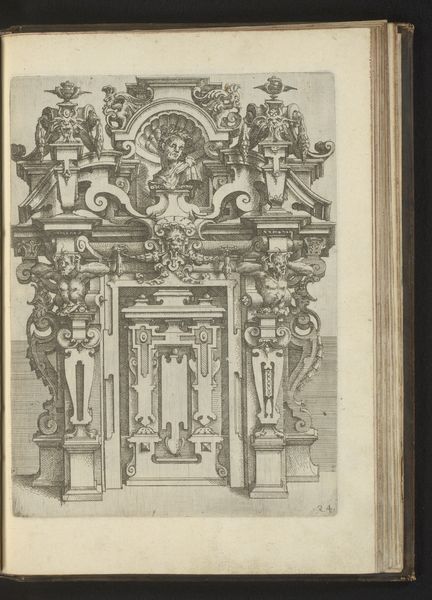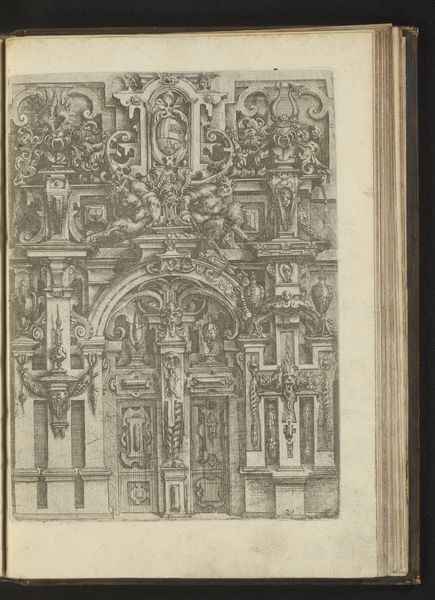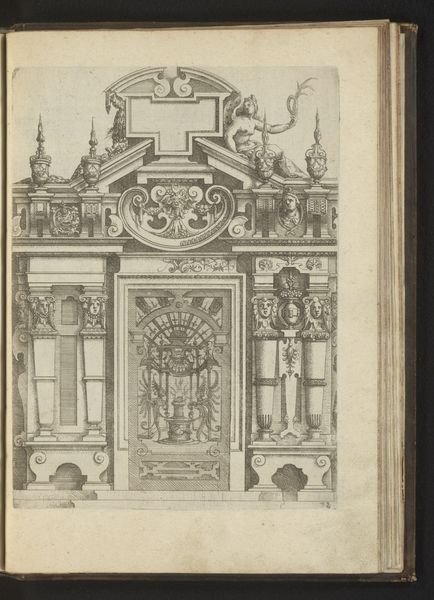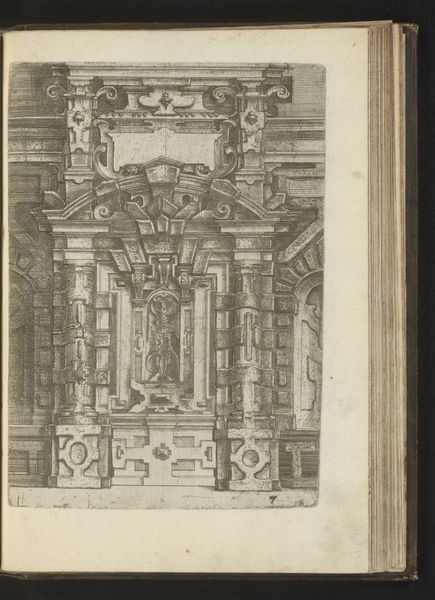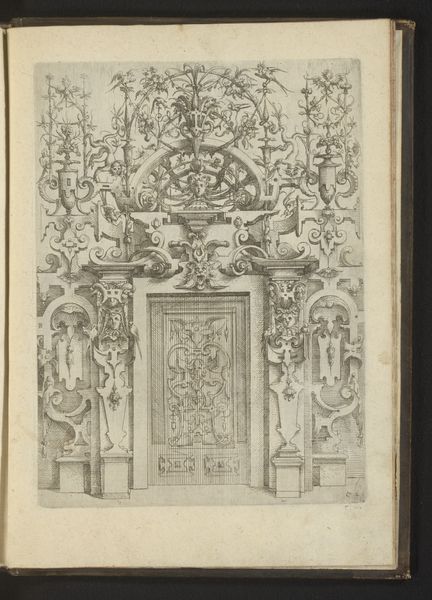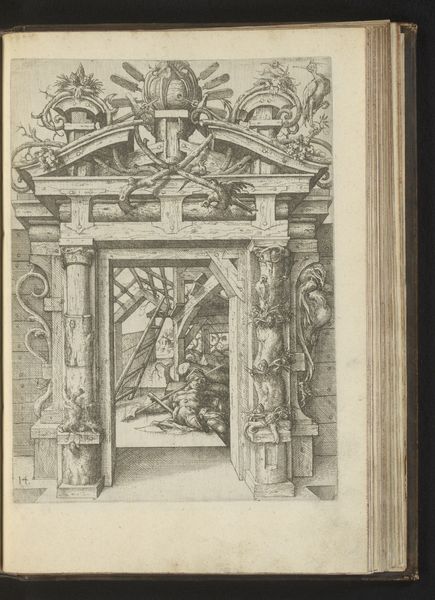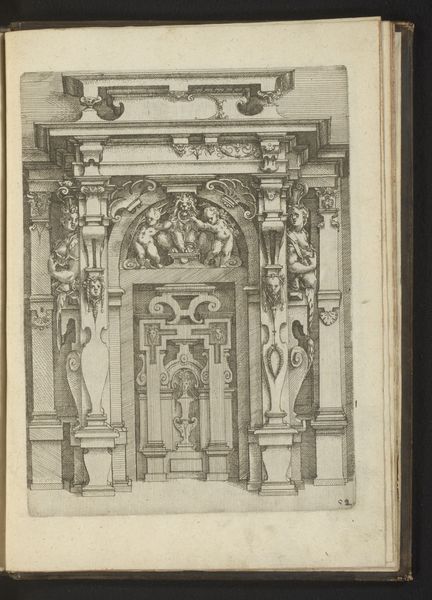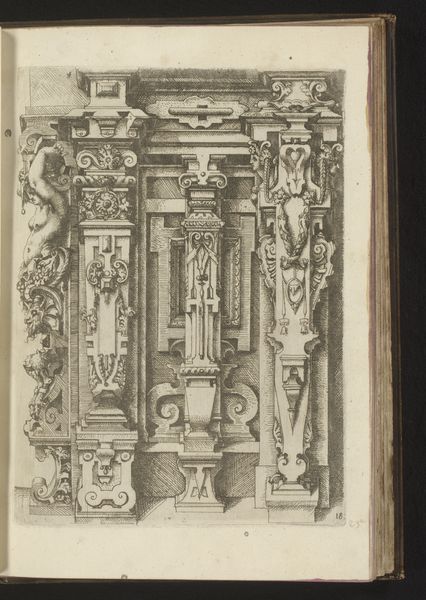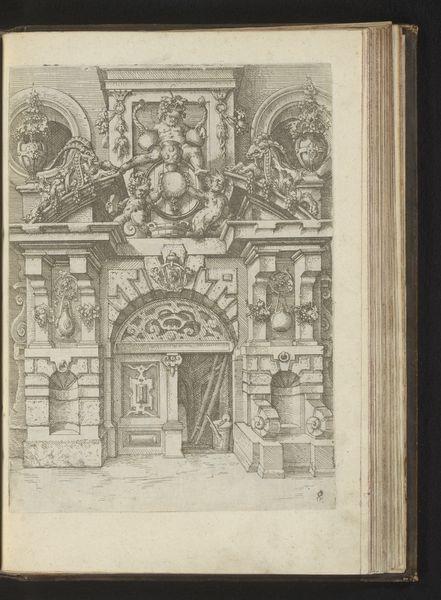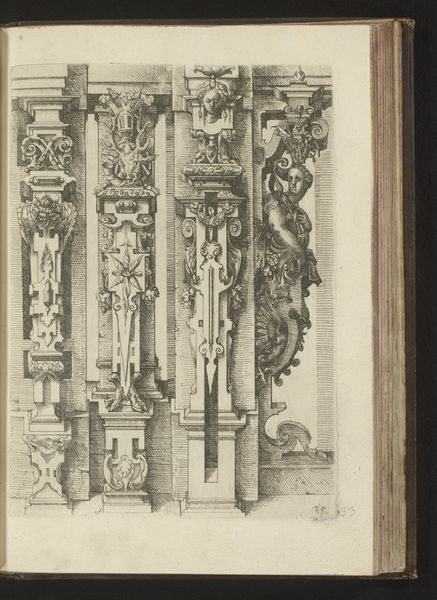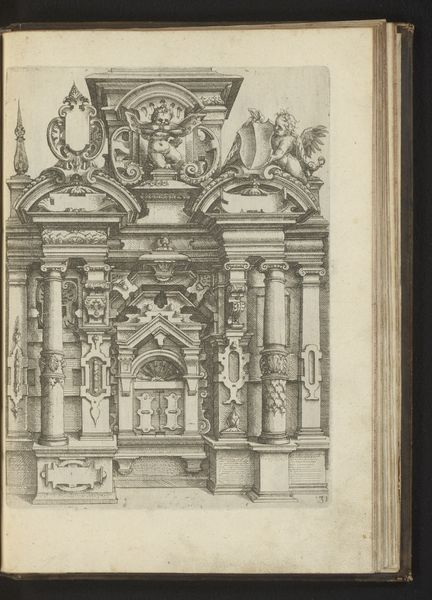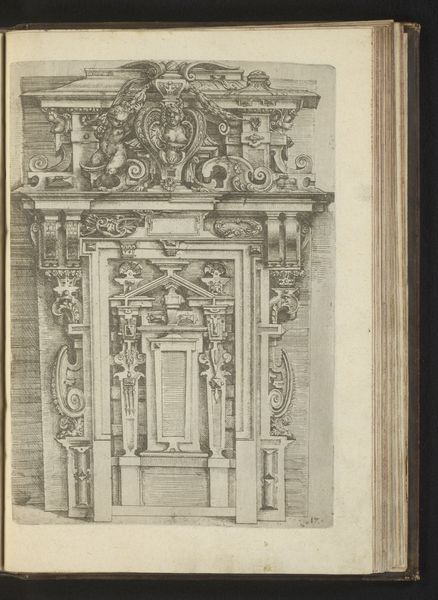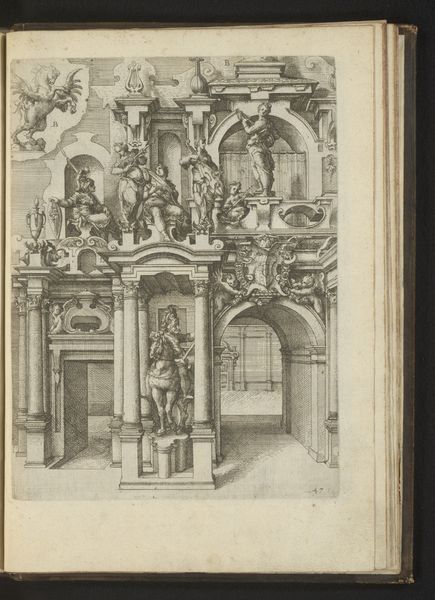
Twee composiete pilasters, twee vrouwelijke hermen en een vaas met daarop een kind 1593 - 1595
0:00
0:00
drawing, ink, engraving, architecture
#
drawing
#
pen drawing
#
figuration
#
form
#
11_renaissance
#
ink
#
column
#
engraving
#
architecture
Dimensions: height 250 mm, width 290 mm
Copyright: Rijks Museum: Open Domain
Wendel Dietterlin produced this engraving of composite pilasters, female herms, and a child-topped vase in the late 16th century. The print comes from his treatise, Architectura, which advocated for a highly ornamental architectural style that flew in the face of classical norms. In the late Renaissance, the institutions of art and architecture became increasingly codified. Academies arose, dictating proper artistic training and style. Dietterlin's work is a deliberate provocation against such norms, favoring invention and fantasy over established rules. The grotesqueness and exaggerated ornamentation here reflect a broader artistic trend known as Mannerism, which prized artifice and subjectivity. Understanding Dietterlin requires looking into the institutional history of art. What were the architectural standards of the time? What kind of training did artists receive? These are the questions a historian asks, drawing on period documents and publications to better understand the social and artistic context that shaped this image. Art's meaning is always contingent on its time.
Comments
No comments
Be the first to comment and join the conversation on the ultimate creative platform.
